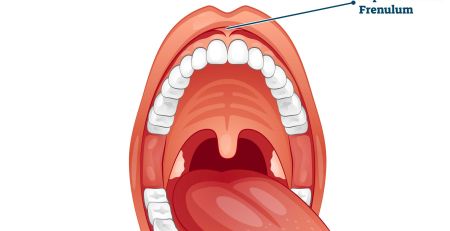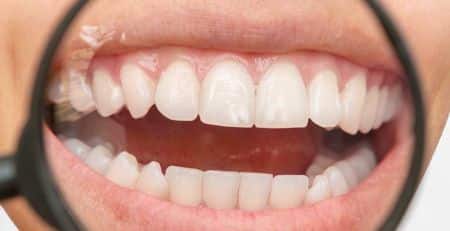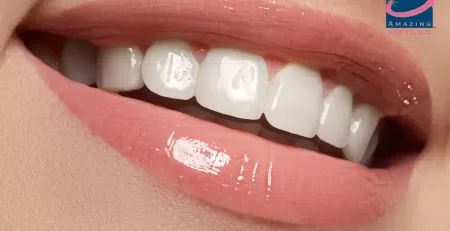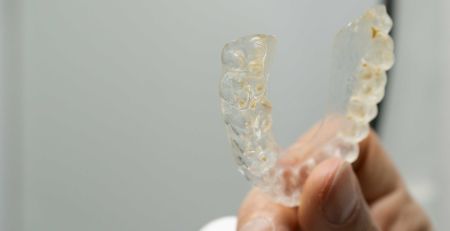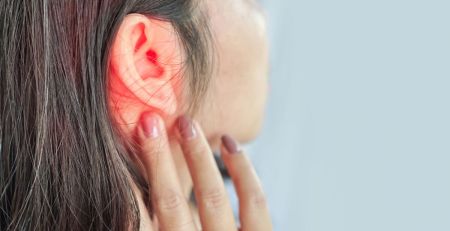Table of Contents
Headaches and tooth pain are two common health concerns affecting millions worldwide. While they may appear unrelated, numerous studies and clinical observations have revealed a fascinating connection between these seemingly distinct conditions.
Shared Nerve Pathways, Understanding the Connection
One significant factor contributing to the association between headaches and tooth pain is the sharing of nerve pathways.
The trigeminal nerve, the largest cranial nerve responsible for sensory information from the face and mouth, plays a crucial role in both conditions.
When dental issues such as cavities, infections, or gum disease arise, the trigeminal nerve can transmit pain signals to various regions, including the teeth, jaws, and head. This overlapping neural network can lead to the referral of pain from the affected teeth to the head, resulting in headaches.
Can tooth pain cause headaches? Diagnosis and Treatment

Diagnosing the exact cause of the link between headaches and tooth pain can be challenging, requiring a multidisciplinary approach involving dentists, neurologists, and sometimes ENT specialists. A comprehensive examination may include dental x-rays, MRI scans for TMJD, and assessments for sinus issues.
Treatment strategies vary based on the underlying cause:
Temporomandibular Joint Disorder (TMJD)
Another common factor linking headaches and tooth pain is temporomandibular joint disorder (TMJD).
TMJD affects the jaw joint and surrounding muscles, leading to jaw pain, clicking or popping sounds, and limited jaw movement. Studies have found a strong correlation between TMJD and headaches, with tooth pain often accompanying both conditions.
The dysfunctional jaw joint can cause referred pain to the teeth, triggering dental discomfort alongside headaches.
Alternative Treatment Methods for TMJ – Cranial Osteopathy
Cranial Osteopathy gentle technique focuses on the subtle movements of the skull and its connection to the rest of the body. It’s particularly useful for alleviating headaches stemming from dental issues, TMJD, or sinus infections by promoting relaxation of the cranial and facial muscles and improving fluid circulation.
While osteopathy offers a holistic approach and can be highly effective in managing pain and discomfort, it’s important to use it as a complementary treatment alongside traditional medical and dental interventions. For instance, dental problems like cavities or abscesses require direct treatment from a dentist, and osteopathy can support recovery by addressing related symptoms and promoting overall wellness.
Bruxism (Teeth Grinding)

Bruxism, the habit of clenching or grinding one’s teeth, is widespread and can contribute to headaches and tooth pain.
Excessive force exerted on the teeth due to bruxism can lead to dental problems like tooth sensitivity, enamel erosion, and cracked teeth.
Furthermore, the muscle tension and strain resulting from bruxism can cause headaches, often described as tension-type or temporomandibular joint-related headaches.
Thus, bruxism can be a common link between tooth pain and headaches.
Sinus Infections
Sinus infections can cause tooth pain and headaches simultaneously, emphasizing the connection between the two.
When the sinuses become infected or inflamed, the increased pressure and congestion can lead to pain in the upper teeth and the surrounding structures, resulting in toothache.
Sinus-induced pain can also radiate to the head, manifesting as headaches. Proper diagnosis is crucial to differentiate between sinus-related pain and dental issues and ensure appropriate treatment.
Psychological Factors
Psychological factors, including stress, anxiety, and depression, can contribute to headaches and tooth pain.
These emotional states often increase muscle tension, including jaw clenching and teeth grinding. Consequently, individuals experiencing psychological distress may be more prone to developing both dental problems and headaches. Addressing these underlying psychological factors can significantly alleviate symptoms and improve overall well-being.
Preventive Measures
Preventing the link between headaches and tooth pain involves maintaining good oral hygiene, regular dental check-ups, and awareness of habits like teeth grinding.
Additionally, practising stress-reduction techniques and ensuring a proper ergonomic setup while working can help minimize the risk of TMJD and its associated symptoms.
Conclusion
Headaches and tooth pain share various interconnected factors, ranging from shared nerve pathways to dental conditions like TMJD and bruxism.
Understanding this intricate relationship is crucial for accurately diagnosing and effectively managing these common health issues.
You should seek treatment from an Amazing Smiles Dentist on the Gold Coast or in the surrounding Brisbane Areas and a medical professional to identify the underlying causes and develop personalized treatment plans.
By addressing dental concerns and headache management strategies, individuals can experience relief from these interconnected ailments and enhance their quality of life.
References:
- Di Felice R, Lombardi L, Piancino MG, et al. Headache and dental practice: A concise review. J Headache Pain. 2016
Disclaimer:
This article is intended for educational and informational purposes only and is not meant to serve as medical advice, a diagnosis, or a treatment plan. Health conditions are complex and vary greatly from person to person, so it is crucial to consult a healthcare professional for personalized medical advice. The information provided here should not be used as a substitute for professional medical guidance, diagnosis, or treatment. Always seek the advice of your physician or another qualified health provider with any questions regarding a medical condition or before starting any new treatment or making changes to existing treatment. Reliance on any information this article provides is solely at your own risk.




